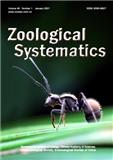
动物分类学报(英文版)(Zoological Systematics) 知网万方目次维普目次
- CSCD
- 科核
- 主管单位:
中国科学院
- 主办单位:
中国科学院动物研究所;中国动物学会;中国昆虫学会
- 国际刊号:
2095-6827
- 国内刊号:
10-1160/Q
- 学科分类:
- 字数:
6000-34000
- 有无基金:
/有基金 100.0%
- 周期:
CN外文-季刊
- 特殊属性:
外文期刊
- 电话:
010-64807167(202402期)
- 邮箱:
dwfl@ioz.ac.cn(202402期)
- 复合因子:
0.151
- 综合因子:
0.113
- 收录:
知网,万方目次,维普目次
- 级别:
CSCD,科核
期刊简介
《动物分类学报》期刊已被查看: 次
更新频次
单位占比
一作占比
/有基金-100.0%投稿指南
1、投稿方式:在线投稿、邮箱投稿或邮寄投稿。
2、刊内网址(202402期):http://www.zootax.com.cn
3、投稿系统:
https://mc03.manuscriptcentral.com/zoosys
4、刊内邮箱:dwfl@ioz.ac.cn
5、刊内电话:010-64807167
6、出刊日期:季刊,逢季首月出版。
2024年5月9日星期四
《动物分类学报(英文版)》投稿
【2024年02期信息】
Sponsored by Institute of Zoology, Chinese Academy of Sciences, along with China Zoological Society and Entomological Society of China, administrated by Chinese Academy of Sciences.
Aim and Scope
The journal Zoological Systematics, which was previously known as Acta Zootaxonomica Sinica, was established in 1964. It reports works on original research, reviews and comments on all aspects of systematics (taxonomy, phylogeny and classification). Taxonomic monographs, new theories and methods of systematics, morphology and biogeography will be on the priority list of publication.
Abstracting and Indexing
The journal is cited by the international retrieval organizations including "Abstract Journal", "Entomology Abstracts", "Zoological Record", "Biological Abstracts", "Cambridge Scientific Abstracts", "Centre for Agriculture and Bioscience International", "Current Bibliography on Science and Technology", and all major Chinese retrieval organizations.
Submission
Manuscripts can be submitted via the website of the journal (http://www.zootax.com.cn). The authors can check the status of their manuscript through visiting the website. Generally, authors may receive comments from both reviewers and editors in two months. Submissions by email (dwfl@ioz.ac.cn) or by traditional post (see back cover) are also acceptable.
When submitting manuscripts, the corresponding author is required to offer the names and contact information of two or more potential reviewers. Authors are normally required to submit the revised manuscripts three months. To reduce the duration of the review process, authors should follow the formats of the journal.
Manuscripts submitted should not be published or accepted for publication elsewhere in other journals. Without significant contribution to systematics, agriculture, forestry or fisheries, short manuscripts with only the descriptions of a single species of invertebrates or insects, are not acceptable.
Publication
Zoological Systematics is an open access journal, with all papers published in the journal can be downloaded from the website for free (http://www.zootax.com.cn).
Page charges are required for publication in Zoological Systematics. To encourage taxonomic monographs or reviews, color plates are free for papers over 50 pages in length.
《动物分类学报(英文版)》投稿须知
【官网信息】
Information for Authors
The current journal is mainly focused in zoological systematics. According to Systematics Agenda 2000 (1994), systematics is the science built on the following tasks: Taxonomy—the science of discovering, describing, and classifying species or groups of species (together termed taxa); Phylogenetic analysis—the discovery of the evolutionary relationships among a group of species; and Classification—the grouping of species, ultimately on the basis of evolutionary relationships.
1 General
Manuscripts should be written in English and in either RTF or Word format. If possible, use Times New Roman 10 point font; minimize formatting by using bold and italics only where necessary; indent the beginning of all paragraphs by 4 characters. Taxonomic names must agree with the articles and recommendations of the International Code of Zoological Nomenclature.
hyphens "-": for words. For example: fishtail-shaped; finger-like.
n-dash "–": for ranges. For example: Leg I–III; 1977–1981; Figs 5–34.
m-dash "—": for appositions that may replace commas, colons and parentheses. For example: It is hard to recognize the Camellia fruit borer—Neoblastobasis camelliae—a new species of Blastobasidae.
Do not insert spaces when using either n-dashes or m-dashes.
2 Title, authors and affiliations
The title of the paper should be informative yet concise. Indicate higher taxonomic categories using parenthesis and list in hierarchical order (Order: Family: Subfamily 1, Subfamily 2). Place a colon “:” between different hierarchical levels and a comma "," between the same levels. Give common names to facilitate reading by non-specialists. For example: A taxonomic revision of the hawk moth genus Lapara (Lepidoptera: Sphingidae).
Give the full name of all authors and start each name with capital letters. For example: Xiaoming Wang.
The author addresses should be in italics as follows: institutional affiliation (university, institute), city, state/province (if applicable), postal code, country, E-mail. Designate one corresponding author. For example: Institute of Zoology, Chinese Academy of Sciences, Beijing, 100101 China, E-mail: dwfl@ioz.ac.cn.
3 Abstract
The abstract should be a concise summary of the significant content and salient conclusions of the work. Explicitly mention all taxonomic changes proposed in the paper. For example: Our analyses discovered three new taxa: taxon A, taxon B and taxon C.
From three to eight key words should follow the abstract and separate using commas. The key words should not be present in the title and abstracts.
4 Main text
The main text should include an Introduction, Materials and methods, Results, Discussion, Acknowledgements and References. If applicable, list the Funding support before the Acknowledgements. For taxonomic works: the Materials and methods can include the deposition of specimens, methods used for drawings and photos, terminology in text, etc.
Use either simple or short compound sentences for clarity. Authors who are not native English-speakers are strongly encouraged to have their manuscript read by native speakers before submission. For taxonomic works, use complete sentences rather than the "subject+object" model in the description section of the Introduction, Diagnosis, Remarks, etc.
4.1 Number the heading levels
The following format is suggested for Zoological Systematics.
1 Introduction
2 Material and methods
3 Results/Systematics/Taxonomy
3.1 Result 1
3.1.1 …
3.1.2 …
3.2 Result 2
4 Discussion
4.1 ……
4.2 ……
Funding
Acknowledgements
References
4.2 Table
Tables should immediately follow the References. The font should be in Times New Roman and 9 point.
4.3 Figures
Figures should be in JPG, JPEG, GIF, TIFF or PNG files of publishable quality. For the review, lower-quality figures can be embedded in the Word document after the tables, if they do exist. Figures of higher quality may be required upon acceptance. Color photographs and drawings are preferred, although B&W figures are also acceptable. Softwares, such as Adobe Illustrator? or Adobe Photoshop?, can be used to clean up the background and number the figures. For the initial submission, please combine all figures into one large PDF file. Size the document to ≥575px×400px and ≥300dpi (Word size: 10 points).
In the text, refer to figures as follows: Fig. 1; Figs 2, 3. Number compound figures sequentially first from top to bottom then from left to right. Provide scales in all figures depicting morphological characters.
Figures 1–3. Adults. 1, species A; 2, species B. Scale bar = 25px.
Figure 1. Genus species. A, Habitus; B, C, male genitalia; D–F, head (D), thorax (E) and abdomen (F). Scale bar = 25px.
4.4 References
Journal:
Authors. Year. Title of the paper. Title of the journal (in full when possible), volume number (issue number): page range. doi number (if possible).
Book chapter:
Authors. Year. Title of chapter. In: Editor(s) (ed./eds), Title of the book. Publisher, Publisher location. pp. page range.
Book:
Authors. Year. Title of the book. Publisher, Publisher location. Pages pp.
Internet resource:
Authors. Year(s). Title of website, database or other resources. Available from http://....../ (Date of access).
For example:
Klimoski, R., Palmer, S. 1993. The ADA and the hiring process in organizations. Consulting Psychology Journal: Practice and Research, 45(2): 10–36. doi:10.1037/1061-4087.45.2.10.
Caselli, D., Carraro, F., Castagnola, E., Ziino, O., Frenos, S., Milano, G.M., Aric, M. 2010. Morbidity of pandemic H1N1 influenza in children with cancer. Pediatric Blood & Cancer, 55: 226–228.
Hartley, J.T., Harker J.O., Walsh, D.A. 1980. Contemporary issues and new directions in adult development of learning and memory. In: Poon, L.W. (ed.), Aging in the 1980s: Psychological issues. American Psychological Association, Washington, DC. pp. 239–252.
McKibben, B. 1992. The age of missing information. Random House, New York, NY. 482pp.
Beccaloni, G., Scoble, M., Kitching, I., Simonsen, T., Robinson, G., Pitkin, B., Hine, A., Lyal, C. (eds). 2003. The Global Lepidoptera Names Index (LepIndex). Available from http://www.nhm.ac.uk/entomology/lepindex (accessed 6 January 2007).
4.5 Description of a species
When describing a taxon, the following order is suggested.
1) Taxon name. Scientific name (with author and year); citation. All citations of the taxon should be listed in references section.
2) Diagnosis. Only diagnostic characters from similar species.
3) Description. All characters of the taxon.
4) Material examined.
Holotype. ♂, China: Beijing, Badaling (40.35oN, 116.02oE; elevation 1300m), 5 September 1992, leg. Xin-Ming Wang (Deposition and register no.). Paratypes. 5♀, same data as holotype. Other material examined. Country: State, locality A (geographic coordinates and elevation), ♂♀, date, collecter (Collection and registration no.); locality B (geographic coordinates and elevation), ♂♀, date, collector (Collection and registration no.).
5) Biology. Biological habits, life cycle, hosts, etc.
6) Distribution. For example: China (Beijing, Hebei, Shanxi, Tianjin); India, Japan, Korea, Mongolia, Nepal, Russia.
7) Etymology. Language of origin for word (stem) (Latin, Greek); adjective, noun in apposition.
8) Remarks/Notes/Discussion/Other.
5 Molecular data
When applicable, all DNA sequence data must be deposited in a public repository, such as GenBank, before publication.
上一篇:吉林中医药下一篇:土壤圈(英文版)(Pedosphere)
《动物分类学报》同类生物科学期刊
-
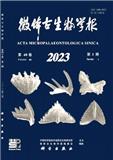
微体古生物学报
北核,CSCD,科核,高T2
CN中文-季刊影响因子0.718
-
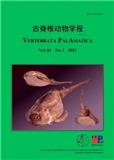
古脊椎动物学报(中英文)
北核,CSCD,科核,高T1
CN中文-季刊影响因子0.7
-

植物科学学报(原:武汉植物学研究)
北核,CSCD,科核,武A-
CN中文-双月刊影响因子1.589
-
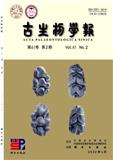
古生物学报
北核,CSCD,科核,高T1,武B+
CN中文-季刊影响因子0.83
-
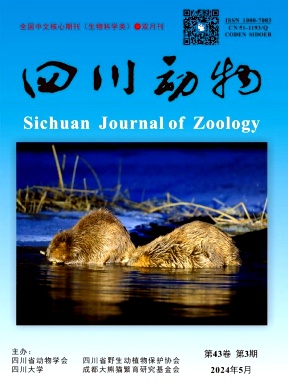
四川动物
北核,科核
CN中文-双月刊影响因子1.24
-
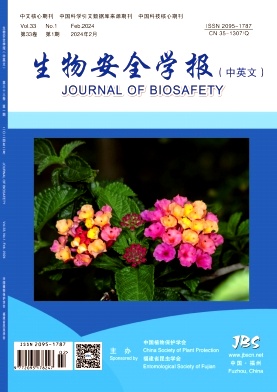
生物安全学报(中英文)(原:华东昆虫学报)
北核,科核,CSCD扩
CN中文-季刊影响因子1.247
-
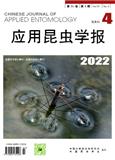
应用昆虫学报(原:昆虫知识)
北核,CSCD,科核,武A
CN中文-双月刊影响因子1.836
-

生物化学与生物物理进展
北核,CSCD,科核,武A-
CN中文-月刊影响因子1.167
常见问题
-
动物分类学报杂志社官网、联系方式是什么?
动物分类学报杂志社官网:http://www.zootax.com.cn
投稿网址:https://mc03.manuscriptcentral.com/zoosys联系电话:010-64807167(202402期)
投稿邮箱:dwfl@ioz.ac.cn(202402期) -
动物分类学报杂志是核心期刊么?
动物分类学报是核心期刊,级别是:CSCD,科核, 是:生物科学分类下的知网,万方目次,维普目次收录的期刊。
-
请问你们是动物分类学报杂志社吗?
我们不是《动物分类学报》杂志社。本站主要从事期刊信息展示与期刊推荐,不是任何杂志官网,直投稿件请联系杂志社。本站仅提供免费的学术指导、论文辅导、期刊投稿信息整理收集服务。
-
你们指导服务后可以保证文章被发表吗?
期刊发表的成功与否,主要取决于文章内容的质量。编辑老师会根据研究领域、创新性等多因素进行考量。我们会帮助您理解期刊的发表要求,助力提升发表几率,从而增加发表的机会。
-
晋级论文能否在报纸上发表?
在学术界,论文的发表往往被视为研究者职业发展的重要一环。晋级论文,即为了获得更高职称或学术地位而撰写的学术论文,通常需在专业期刊上发表。然而,许多人可能会问
